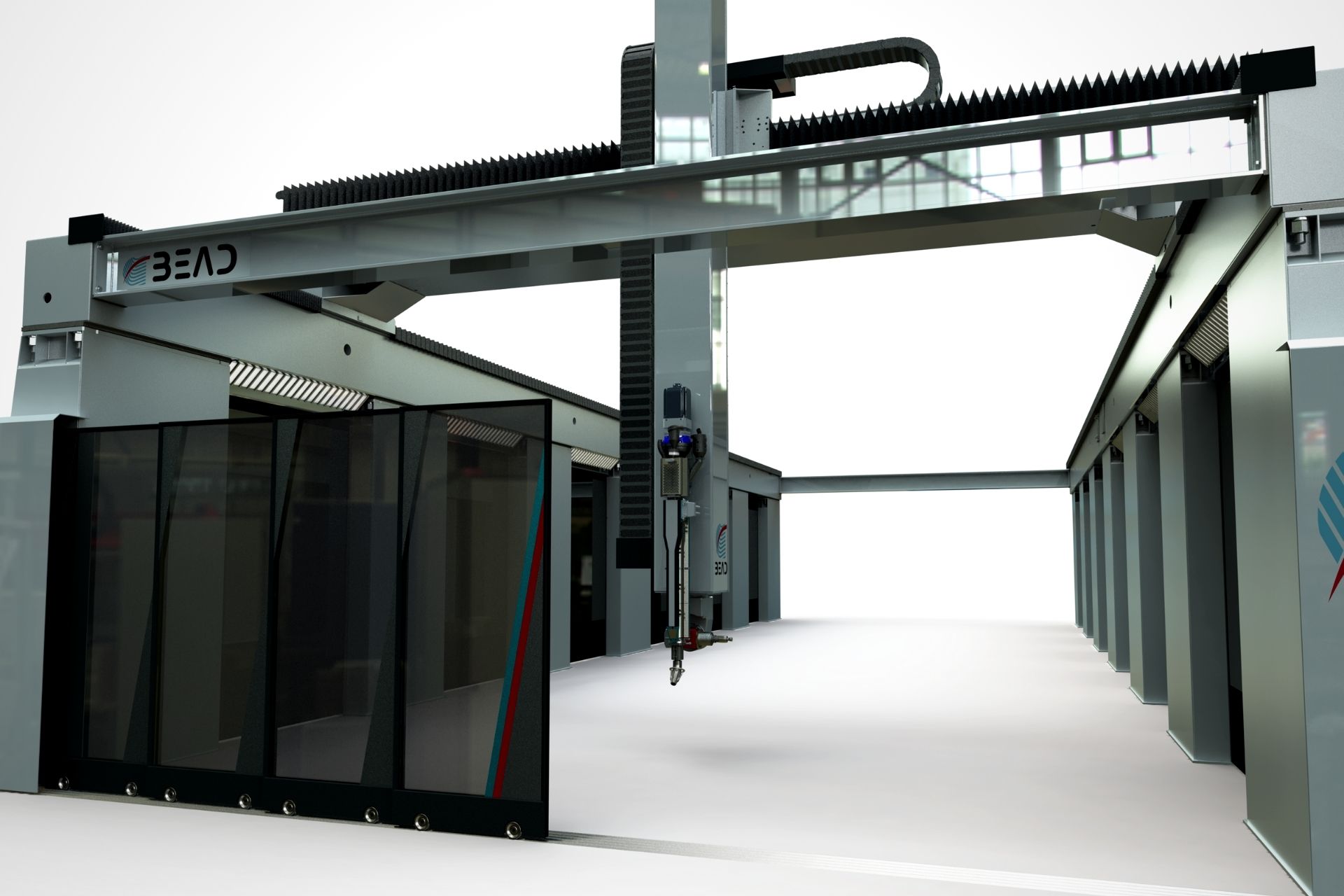Since breaking out of desktop 3D printer manufacturing, Lucas Janssen and Maarten Logtenberg have been focused on large-scale 3D printing and composites. With CEAD, the former Leapfrog cofounders are attempting to fill the huge potential for additive manufacturing in the industrial space. After having developed a large-format continuous fiber additive manufacturing (CFAM) machine, as well as a smaller robotic system, the Dutch firm has announced the release of a new extruder capable of printing big parts at even faster rates.
The E50 is an upgrade of the previous E25 printhead. While the E25 was able to 3D print using plastic pellets at a rate of 12 kg/hr, the new model can extrude materials at a whopping 84 kg/hr (185 lbs/hr). This was based on using polypropylene reinforced with glass fiber at 30 percent by weight. According to CEAD, this was only running at 60 percent of the E50’s maximum speed.
E50 users have access to nozzle sizes ranging from 8 to 20 millimeters in diameter. It comes with a thermoplastic pellet feeder and Siemens PLC-based control, managed by either analog 0-10v or digital 0-24v signals, and can be mounted to a robotic arm or CNC gantry. Powered by a 15 kW motor, the new printhead can print at temperatures of up to 400°C, making it possible to 3D print performance materials, such as carbon-filled PESU and peek. A 400-litter pellet dyer can also be purchased, integrated with the firm’s pellet feeding system.
So far, such users as ETH Zurich, University of Stuttgart, Rapid Prototyping, and Tampere University have been relying on the E25 extruder, either on robotic arms or CNC machines. Now, the E50 can speed up the printing of customers like these. Naturally, these speeds are necessary for producing large objects, otherwise it would take far too long to justify 3D printing items at such scales.
For comparison, the LSAM machines of CEAD competitor Thermwood can print at a rate of up to 100 lbs/hour. The Big Area Additive Manufacturing system from Cincinnati Inc. can achieve 80 lbs/hr. The massive Ingersoll MasterPrint can achieve rates up to 1,000 lbs/hr.
CEAD will be integrating the E50 onto its larger BEAD machines, a gantry-style, hybrid 3D printer and CNC machine developed with CNC developer Belotti. Prints with layers created by nozzles measuring 8 to 20 mm in diameter need to be machined to finish. Therefore, the hybrid system is able to process large parts to the necessary final tolerances. The BEAD systems are capable of 3D printing objects up to 6-50 meters in length, 2.6-11 meters in width and 1.5-5 meters in height.
As mentioned, CEAD is one of a handful of companies that have developed large-scale composites 3D printing technologies. From what I understand, they and Ingersoll are the only firms offering continuous fiber reinforcement, though this is only the case for CEAD’s CFAM machine and not necessarily the robotic arm extruders like the E50.
Because CEAD has strong partners in Siemens and DSM, it could prove to be an important player in the space. However, Ingersoll and Cincinnati are teamed with the U.S. Department of Energy through Oak Ridge National Laboratory, so it will have some pretty big competition, literally and figuratively.
Subscribe to Our Email Newsletter
Stay up-to-date on all the latest news from the 3D printing industry and receive information and offers from third party vendors.
You May Also Like
Gorilla Sports GE’s First 3D Printed Titanium Cast
How do you help a gorilla with a broken arm? Sounds like the start of a bad joke a zookeeper might tell, but it’s an actual dilemma recently faced by...
Nylon 3D Printed Parts Made More Functional with Coatings & Colors
Parts 3D printed from polyamide (PA, Nylon) 12 using powder bed fusion (PBF) are a mainstay in the additive manufacturing (AM) industry. While post-finishing processes have improved the porosity of...
$25M to Back Sintavia’s Largest Expansion of Metal 3D Printing Capacity Since 2019
Sintavia, the digital manufacturing company specializing in mission-critical parts for strategic sectors, announced a $25 million investment to increase its production capacity, the largest expansion to its operations since 2019....
Velo3D Initiates Public Offering in a Bid to Strengthen Financial Foundations and Drive Future Growth
Velo3D (NYSE: VLD) has been among a number of publicly traded 3D printing firms that have attempted to weather the current macroeconomic climate. After posting a challenging financial report for 2023,...

































